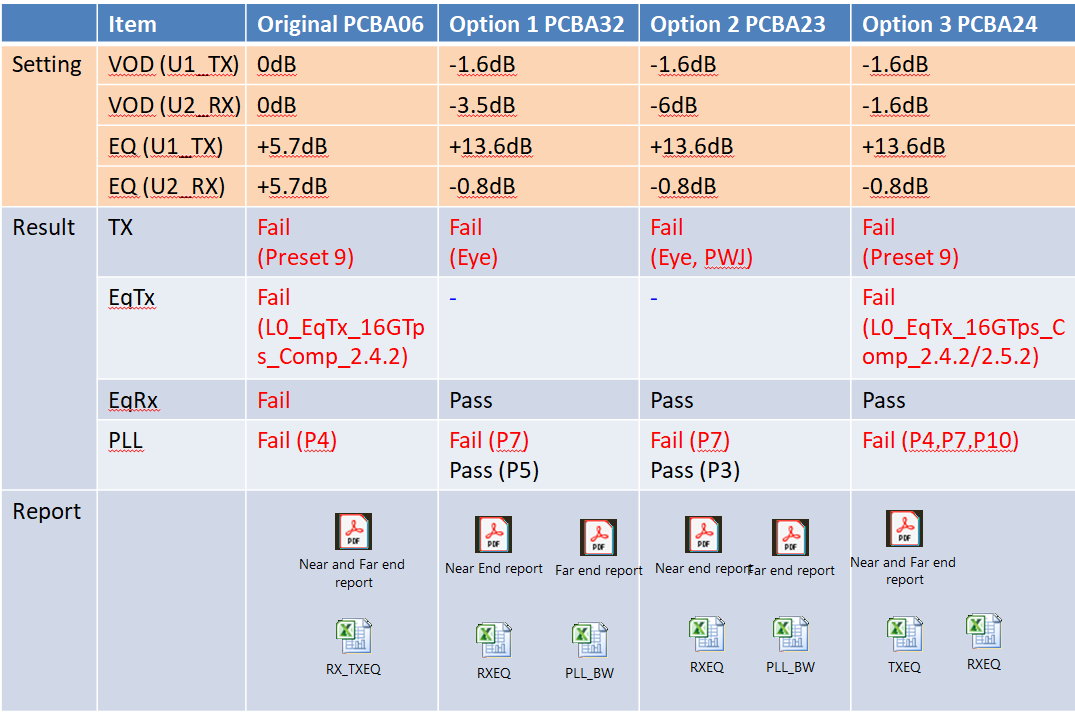Hi
We use the DS160PR410 for PCIe Gen 4 AIC
I have test with the TX compliance test, and PLL_BW test
For PLL_BW
I try to set CTLE to index 0 can Pass the PLL_BW, and Index 1 and over will be fail
For TX compliance
I try to set VOD to Index 0 1 2 3
Index 2 and 3 will fail TX Preshoot Preset #9
Index 0 and 1 will Pass TX Preshoot Preset #9 issue, but our far end eye will fail
Could provide the DS160PR410 CTLE and VOD adjustment suggest for me?
Let me can Pass the TX compliance.





